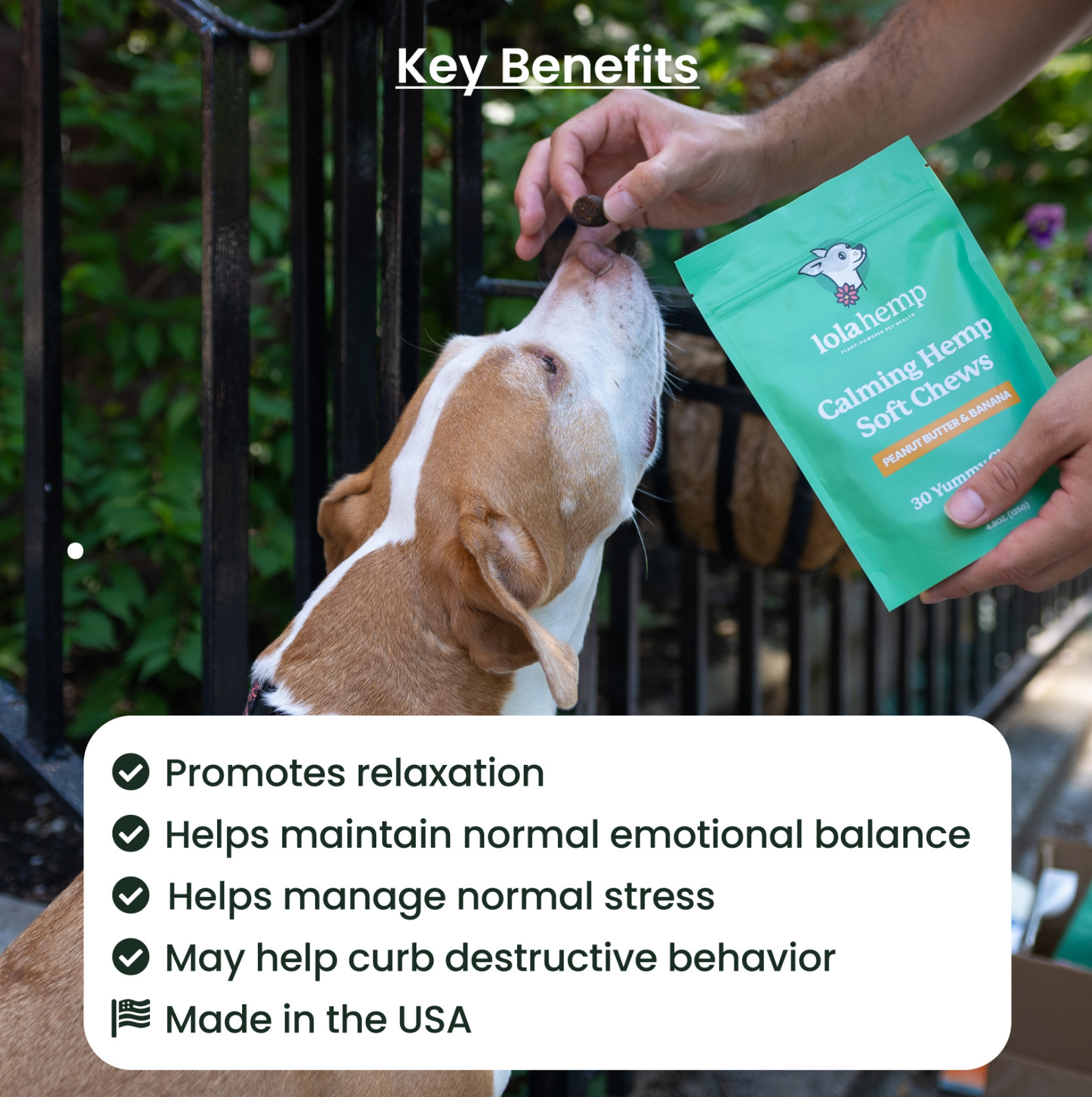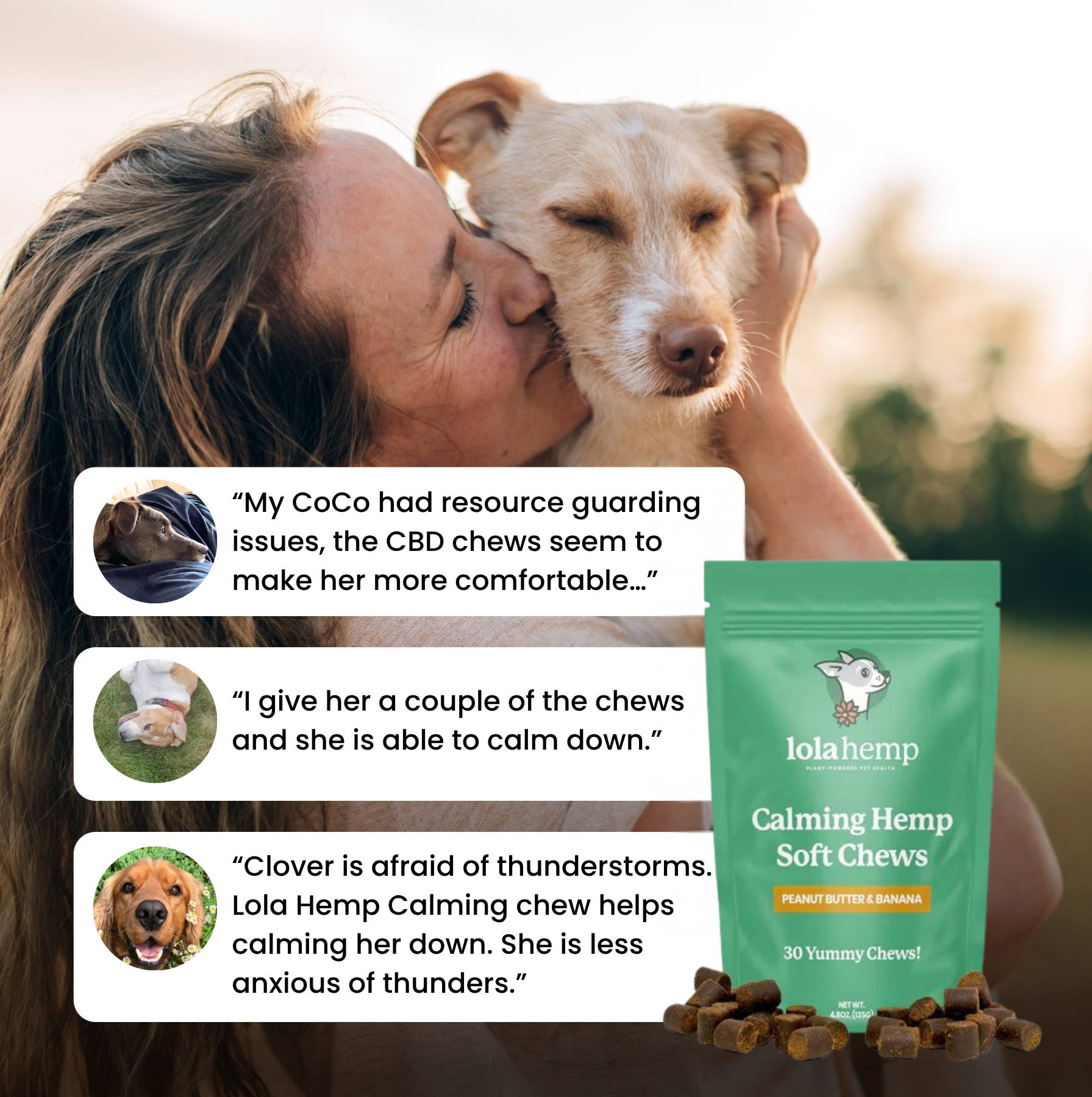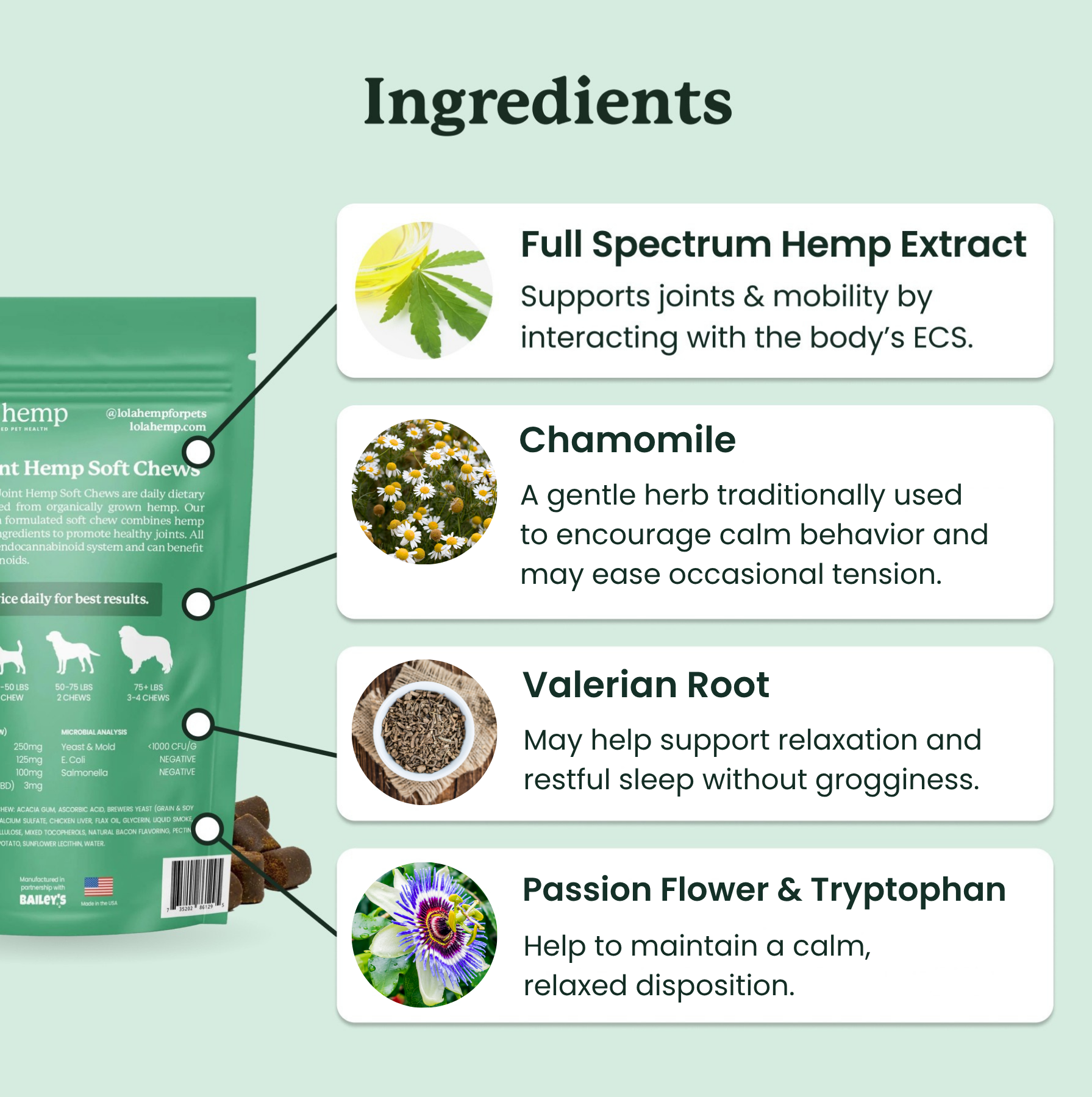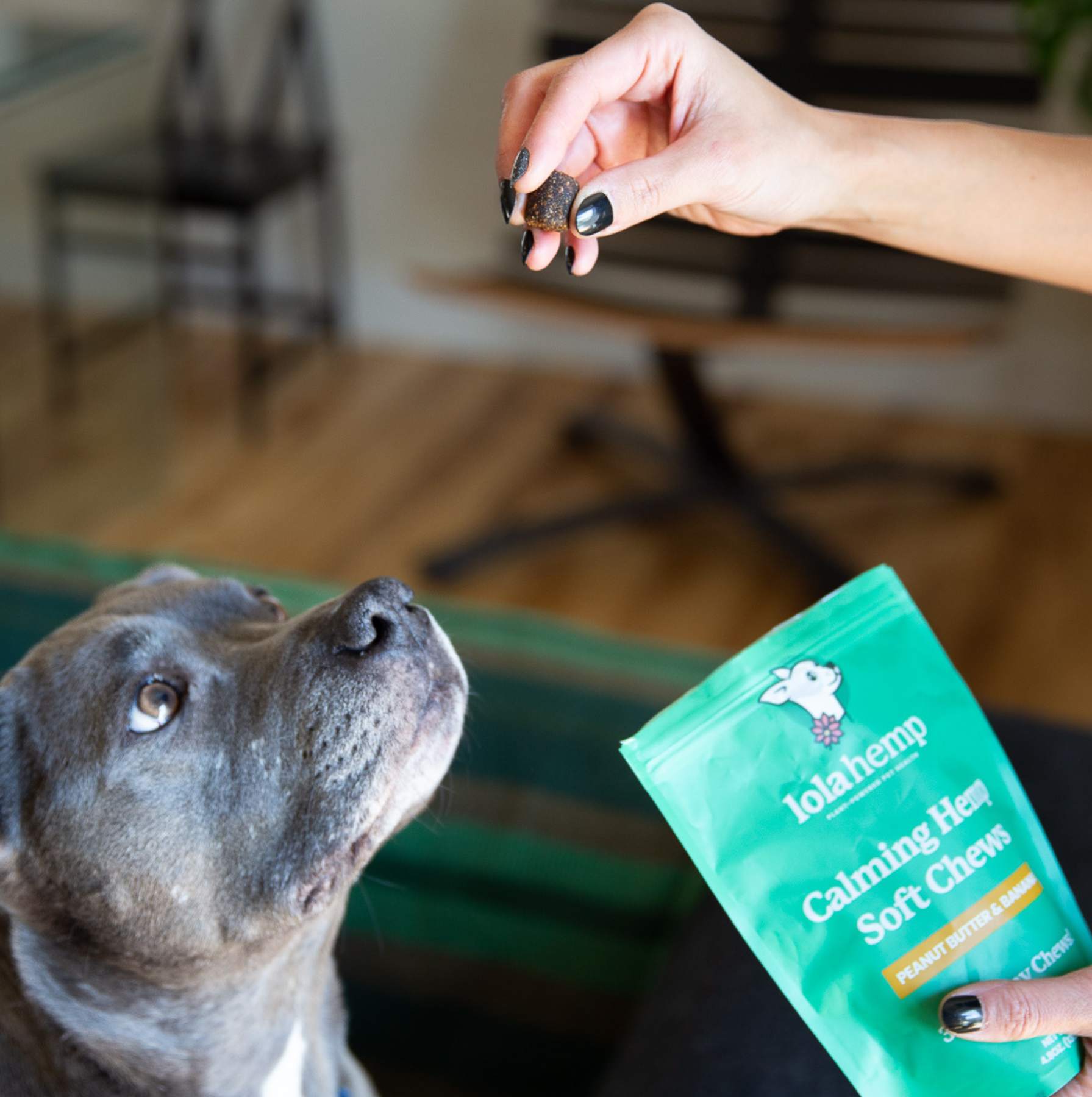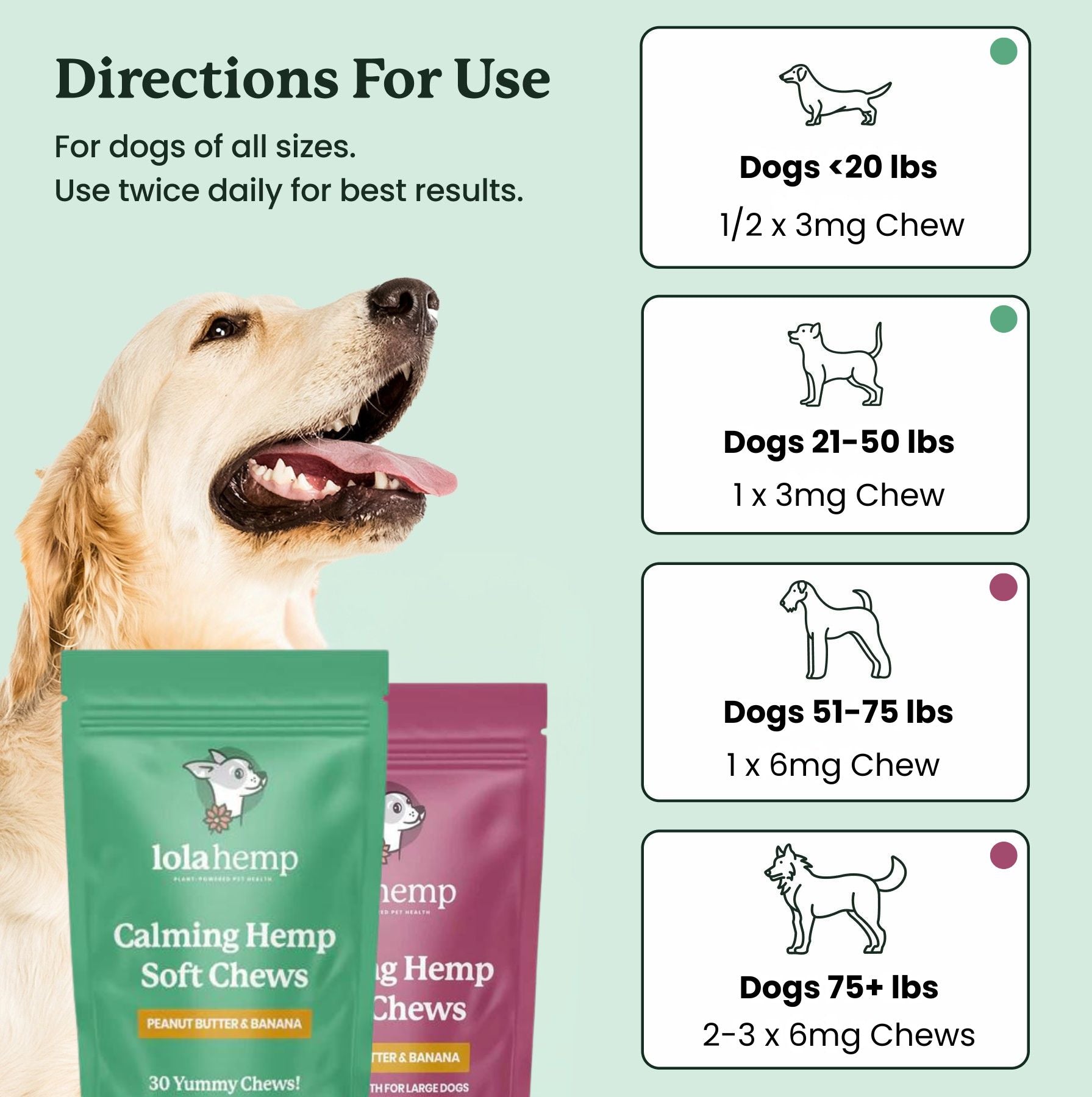Here at Lolahemp, we’re committed to animal welfare and have built strong community partnerships with people and organizations who work tirelessly to rescue second-chance dogs who would otherwise be euthanized in overcrowded animal shelters. In fact, our entire line of CBD products for dogs started because of our own loveable rescue dog: Lola.
According to the ASPCA, as many as 47% of dogs surrendered to shelters are rehomed for behavioral issues. More often than not, these common behavioral problems can be resolved if only the dog owner had more resources to help their pets overcome their problems with some basic understanding of some key concepts.
This article aims to help those who have recently adopted an anxious rescue animal and are looking for canine calming support or who are considering rehoming a dog so that we can help these loving pets to stay in their forever homes.
1. Helping Rescue Dogs with Anxiety Behavior Problems
Imagine for a moment that you are homeless on the streets of a foreign land where you don’t speak the language and rely on the help of others to find shelter, food, and basic security. You don’t have much control over your surroundings, and you can’t communicate effectively with your keepers. Worse, they keep bouncing you around from place to place, and you have no way of knowing what your future will hold.
Would you feel anxious? You bet you would.
We have to be empathetic about the life experiences that dogs in the rescue system have had. Understand that anxiety is a normal response to being in a shelter system, having experienced homelessness, abuse from a previous owner, or even being bounced around in foster care.
Luckily, dogs are resilient, social animals who want to trust their human friends - recovery from anxiety issues is almost always possible.
Recognize Anxiety-Related Behavioral Issues
When dogs are anxious about the safety and permanence of their surroundings, those emotions can manifest in a variety of ways. Examples may include:
- Soiling in the house
- Hiding from their new owners or being emotionally “shut down”
- General anxiety, loss of focus, erratic behaviors
- Fear of strange places or new environments
- Separation anxiety
- Loss of appetite or trouble sleeping
- Resource guarding
- Destructive behavior
- Compulsive behaviors such as persistent barking
- Phobias such as fear of noises or cars
Give it Time
One of the first things to realize when adopting a dog is that oftentimes within a period of weeks (or months), many of the anxiety-related behaviors will begin to fade on their own.
This makes a lot of sense: once a dog comes to trust that his or her relationship with you is real, that you have no intention of giving up on them, and that you are going to provide for their safety and needs, the root of the anxiety usually begins to fade.
Manage the Environment
If you can’t seem to stop unwanted behaviors with a few corrections, then try to manage the environment so the dog can’t get into trouble.
For example, if he keeps getting into the trash in the kitchen, move the trashcan to a pantry or get a tight-fitting lid. Try to be smarter than the dog and remove temptations that are beyond his ability to resist rather than constantly punishing behavior that is self-rewarding.
When you do your part to remove obstacles before you bring your dog home, you are reducing the number of corrections you need to make. This, in turn, reinforces to your new buddy that he is in a safe place and builds on your relationship from a place of trust. Another great option is to crate train your dog and establish that as their home base.

The Calming Effect of Lolahemp Full Spectrum CBD Oil for Dogs
Lolahemp works with many rescue organizations who have told us firsthand that our full-spectrum CBD oil for dogs has helped many dogs caught in the rescue system by providing calming relief. Many of our customers have also had great success using Lolahemp CBD oil to calm their dogs.
Combined with positive training, rewarding calm behavior, and loving patience, Lolahemp CBD Oil may be part of your solution for a nervous rescue dog in your care.
2. Helping Dogs Learn Basic Manners
Dogs are incredibly smart animals.
They have evolved to live in a social community with certain rules. However, domesticated dogs live very different lives than their wild counterparts. While it is fine for a wolf to be quick to aggression and fight his way up the pecking order, this isn't the kind of relationship we want to have with our dogs.
Many people believe in the myth of the “pack order” where dominance is the only language dogs understand. This is, In fact, false. The problem with this misconception is that when we treat our dogs as if all they understand is aggression and physical dominance, they lose their trust in us and lose interest in the desire to learn.
Plus, any existing anxiety and/or aggression problems almost always get worse, not better.
Educate Yourself on Positive Reinforcement Based Training Methods
If you decide to add a dog to your life, it is important that you also take on some responsibility to understand how they learn. Your role in their life, besides being “Best Friend,” is to help guide them to understand what is appropriate in a world built for humans.
Rewards-based training methods, such as clicker training, are incredibly effective, easy to learn, and they build a relationship based on trust and enthusiasm to learn with your dog. When your canine companion comes to see you as the giver of good things (a treat, a walk, a game of tug or fetch), they become very interested in offering the kinds of behaviors that please you most.
When you focus on setting your dog up for success and go out of your way to reward good behavior, you will find that if you do need to correct your dog, it will be much more effective. Usually, a simple loud “No!” will usually suffice when a dog gets accustomed to being treated fairly and positively.
There are many ways to learn about positive reinforcement-based training. These include:
- Hundreds of well-written books on the subject by authors such as Karen Prior, Ian Dunbar, and Jean Donaldson
- Online videos and tutorials that are free and easy to find on sites such as Youtube
- Classes at your local pet shop or animal shelter or humane societies
- Pro-trainers who will come to your home and help you set up a training plan for the specific challenges of your dog
Set Clear and Consistent House Rules
Many people do not realize that dogs are very well-adapted to following house rules and adjusting to clear and consistent expectations. However, if different members of your household enforce different rules, or you provide inconsistent guidance on the rules, it will contribute to feelings of anxiety in your rescue dog.
Set clear rules from the outset and enforce them gently. Be sure the whole family understands the rules, and rewards for the right behavior at least 20 times as often as a dog is corrected for inappropriate behavior.

Provide Physical and Mental Stimulation
The purpose of spending time training your dog shouldn’t just be about basic manners. In fact, once you learn the basics of reward-based training, the odds are good that you will find it an addictive way to enjoy time with your dog.
They benefit you both. While constantly learning new things, your dog will exercise their mind. This prevents boredom and curbs anxiety-related behaviors such as chewing furniture and excessive barking.
Plus, if your dog is not getting enough physical exercise, the problem behaviors you may be experiencing are being exacerbated. Find ways for your dog to run and play off-leash such as in the backyard, at the dog park, or enjoying outdoor spaces such as hiking trails or the lake.
Another option for helping your dog get plenty of mental and physical stimulation is to join an organized dog sport such as flyball, agility, scent trials, or herding trials. These sports will get you in touch with people who will offer plenty of training tips for free as well as get you, your dog, and possibly the kids involved with a fun activity that will get everyone’s blood pumping!
3. Helping Dogs with Aggression Issues
Finally, we come to one of the more difficult problems to address with rescue dogs: Aggression.
Before we dive in too deep, let’s be clear here. Most dogs in the rescue system DO NOT have aggression issues. That is a myth. Also, dogs that are in a reputable shelter or rescue organization foster system have been screened by knowledgeable people.
This means that you will usually know in advance if the dog shows any signs of aggression towards people or other dogs before you make a choice to adopt.
That said, dogs of any age can develop aggression issues. In some cases, you may learn that your dog is aggressive under very specific circumstances that no one could predicted. In such cases, it can present a bit of a difficult decision for pet owners about whether or not to surrender the dog.
As we have covered elsewhere in our blog, aggression in dogs is very complicated and often has fear and/or anxiety at its root. As such, it may be best to hire a professional dog trainer to help you assess the cause of the problem, identify aggression triggers, and develop a sound behavioral reconditioning program to help your dog overcome aggression-related issues.
Rescue Dog Behavior FAQs
How long does it take a rescue dog to adjust to a new home?
Most rescue dogs take several weeks to a few months to fully settle into a new environment. With patience, consistency, and reassurance, most anxiety-related behaviors improve naturally.
What are common signs of anxiety in rescue dogs?
Common symptoms include trembling, excessive barking, hiding, destructive chewing, loss of appetite, and inappropriate urination or defecation.
Can CBD oil really help calm rescue dogs?
Yes. Many owners and rescues report that full-spectrum CBD oil can support relaxation and stress relief when used under veterinary guidance as part of a holistic plan.
How should I introduce a rescue dog to a new environment?
Start slowly and limit exposure to new people or pets at first. Provide structure, routine, and a safe space such as a crate or quiet room for decompression.
What should I do if my rescue dog shows aggression?
Contact a certified dog behaviorist or professional trainer immediately. Avoid punishment and focus on identifying triggers and building trust-based corrective strategies.


